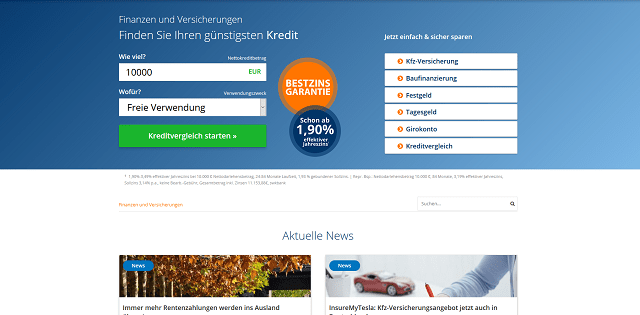Understanding and Managing Swollen Legs: Causes, Prevention, and Solutions
Swollen legs can be uncomfortable and may indicate underlying health issues. Understanding the common causes, preventive measures, and effective solutions is essential for managing and alleviating leg swelling. This guide provides clear, reliable information to help you take proactive steps toward healthier legs.

Leg swelling, medically known as peripheral edema, occurs when excess fluid accumulates in the tissues of the lower extremities. This condition can range from mild discomfort to a sign of serious underlying health issues. Understanding the mechanisms behind swelling helps identify appropriate treatment approaches and when to seek professional medical attention.
The human body maintains a delicate balance of fluids through the circulatory and lymphatic systems. When this balance is disrupted, fluid can leak from blood vessels into surrounding tissues, causing visible swelling. Various factors contribute to this disruption, including gravity, which naturally causes fluid to pool in the lower extremities when standing or sitting for extended periods.
What Causes Swollen Legs and Ankles?
Multiple factors contribute to leg swelling, ranging from temporary lifestyle issues to chronic medical conditions. Common causes include prolonged sitting or standing, which impairs circulation and allows fluid to accumulate in the lower legs. Dietary factors, particularly high sodium intake, can cause the body to retain excess water, leading to swelling throughout the body, including the legs.
Medical conditions frequently associated with leg swelling include heart failure, kidney disease, liver problems, and venous insufficiency. Heart conditions reduce the organ’s ability to pump blood effectively, causing fluid to back up in the circulatory system. Kidney disorders affect the body’s ability to regulate fluid balance, while liver disease can reduce protein production necessary for maintaining proper fluid distribution.
Pregnancy commonly causes leg swelling due to increased blood volume, hormonal changes, and pressure from the growing uterus on blood vessels. Certain medications, including blood pressure medications, anti-inflammatory drugs, and hormone treatments, can also contribute to fluid retention and subsequent swelling.
Swollen Legs Elderly Treatment Options
Elderly individuals face unique challenges when managing leg swelling due to age-related changes in circulation, kidney function, and overall health status. Treatment approaches for older adults typically focus on addressing underlying conditions while implementing safe, effective management strategies.
Medical evaluation becomes particularly important for elderly patients experiencing new or worsening leg swelling. Healthcare providers assess heart function, kidney health, and medication interactions that might contribute to fluid retention. Treatment plans often include medication adjustments, dietary modifications, and lifestyle recommendations tailored to individual mobility and health status.
Compression therapy proves especially beneficial for elderly patients, with graduated compression stockings helping improve circulation and reduce fluid accumulation. However, proper fitting and regular monitoring ensure effectiveness while preventing complications such as skin breakdown or circulation restriction.
Exercises for Swollen Legs and Feet
Physical activity plays a crucial role in managing and preventing leg swelling by promoting circulation and lymphatic drainage. Simple exercises can be performed at home or work to encourage fluid movement and reduce swelling.
Ankle pumps involve flexing and pointing the feet while seated or lying down, activating the calf muscle pump that helps return blood to the heart. Calf raises, performed by rising onto the toes and lowering slowly, strengthen leg muscles while promoting circulation. Walking remains one of the most effective exercises for reducing leg swelling, as the rhythmic muscle contractions help pump fluid back toward the heart.
Leg elevation exercises involve raising the legs above heart level while lying down, allowing gravity to assist in fluid drainage. This simple technique can be performed multiple times daily for 15-20 minutes to reduce swelling and improve comfort.
Effective Leg Pain Relief Strategies
Leg pain often accompanies swelling, creating additional discomfort and mobility challenges. Relief strategies address both the swelling and associated pain through various approaches.
Cold therapy can reduce inflammation and provide temporary pain relief, while gentle massage helps promote circulation and lymphatic drainage. However, massage should be avoided if blood clots are suspected or if the skin shows signs of infection.
Over-the-counter pain medications may provide relief, but individuals should consult healthcare providers before using these medications regularly, especially if underlying medical conditions exist. Topical treatments, including anti-inflammatory creams, can offer localized relief without systemic effects.
When Surgical Leg Swelling Treatment Becomes Necessary
Surgical interventions for leg swelling typically address underlying vascular problems or severe cases that don’t respond to conservative treatment. Procedures may include vein ablation for varicose veins, bypass surgery for arterial blockages, or valve repair for venous insufficiency.
Lymphatic surgery might be considered for patients with lymphedema, a condition where the lymphatic system fails to drain fluid properly. These procedures aim to create new drainage pathways or repair damaged lymphatic vessels.
Surgical options require careful evaluation of risks and benefits, particularly for elderly patients or those with multiple health conditions. Recovery periods vary depending on the procedure, with some patients experiencing temporary increased swelling before improvement occurs.
| Treatment Type | Provider/Method | Typical Cost Range | Duration |
|---|---|---|---|
| Compression Stockings | Pharmacy/Medical Supply | £15-£80 per pair | 3-6 months replacement |
| Physiotherapy Sessions | NHS/Private Clinics | £40-£80 per session | 6-12 sessions |
| Vein Ablation Surgery | Private Hospitals | £2,000-£4,000 | One-time procedure |
| Lymphatic Drainage Massage | Specialist Therapists | £50-£100 per session | Ongoing as needed |
Prices, rates, or cost estimates mentioned in this article are based on the latest available information but may change over time. Independent research is advised before making financial decisions.
Prevention strategies focus on maintaining healthy circulation through regular exercise, proper hydration, and avoiding prolonged periods of inactivity. Dietary modifications, including reducing sodium intake and maintaining adequate protein consumption, support proper fluid balance. Wearing properly fitted shoes and avoiding tight clothing that restricts circulation also helps prevent swelling.
Regular medical check-ups enable early detection and treatment of conditions that might cause leg swelling. Monitoring symptoms and seeking prompt medical attention for sudden onset or severe swelling ensures appropriate treatment and prevents complications.
This article is for informational purposes only and should not be considered medical advice. Please consult a qualified healthcare professional for personalized guidance and treatment.




